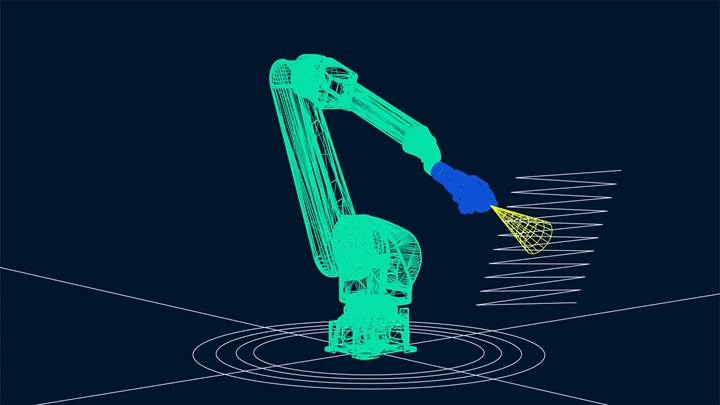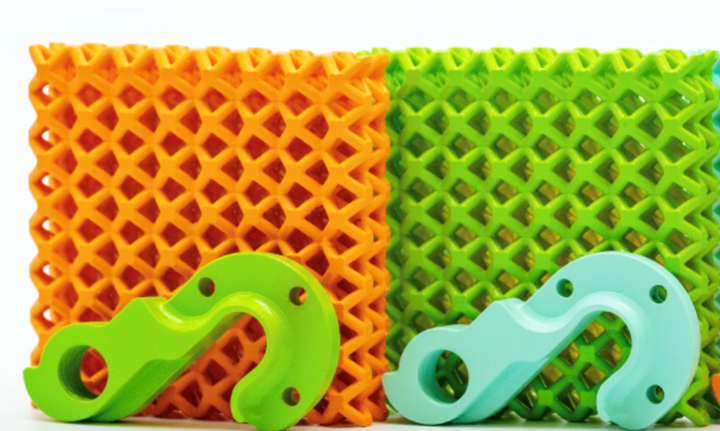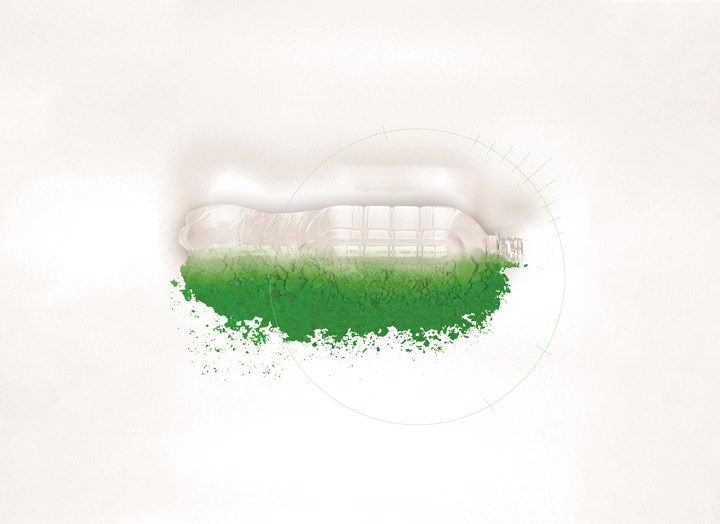Five Trends in Surface Finishing
You’re at IMTS because you’re interested in moving your business forward. No matter what role you fill in the manufacturing process chain, it’s important to consider how your parts will be finished. Here are five trends in surface finishing.
You’re at IMTS because you’re interested in moving your business forward. No matter what role you fill in the manufacturing process chain, it’s important to consider how your parts will be finished. Whether you handle finishing in-house or outsource it, the more you consider the final finish of your part from the very beginning, the better your results will be.
Bygone are the days of just machining a bunch of parts and then sending them to a metal plater’s loading dock — or at least those days should by bygone. If you want the best quality for your parts, you should collaborate closely with each partner along your process chain, and that includes your surface finishing partners.
So what are the trends in surface finishing today? Some of the things finishers are thinking about shouldn’t come as a surprise.

Omnirobotic’s technology enables robots to program themselves based on their environment and task, which has transformative potential for many finishing operations.
Photo Credit: Omnirobotic
1. Automation Solutions
Just like the rest of manufacturing, finishers and coaters are looking for ways to streamline their process. Finishers today are increasingly finding ways to implement robotics and Industry 4.0 solutions to address such challenges as workforce shortages, quality control and repeatability.
While automation isn’t new and has been working its way into the manufacturing world at an increasing rate, it seems that we have reached a tipping point where it’s on the mind of even old-school shops. Finishing operations have traditionally been a slower adopter of the Internet of Things (IoT) and automation solutions, but many factors have been influencing a ramp-up for much of the industry. The COVID pandemic, for example, forced many operations to consider alternate ways of getting things done as staffing concerns worsened with people sick and with a segment of workers exiting the workforce.
Learn more about automation trends for finishers in an episode of Products Finishing’s On the Line Podcast: short.pfonline.com/OTL12

Keyland’s color-matching capabilities, combined with PolySpectra's COR family of materials, now enable consumer and industrial brands to adopt a new approach to digital manufacturing.
Photo Credit: Keyland Polymer
2. 3D Printing
Additive manufacturing is growing by leaps and bounds. As this technology continues to move from the realm of R&D and short run production to full scale production, an increasing number of fabricators will need to outsource the finishing of additively manufactured parts. What considerations are involved in finishing a 3D-printed part? It depends on the materials you’re using, but options range from plating on plastic processes to powder coating using a UV cure.
The AM Radio Podcast recently looked at options and considerations for finishing 3D printed parts. Listen to “Finishing’s Role in Additive Manufacturing” here: additivemanufacturing.media/zc/am-radio-podcast

Electric vehicles require a range of specialized coatings for corrosion protection and thermal management in addition to exterior finishes with enhanced functionality.
Photo Credit: Getty Images
3. Enabling EVs
The advent of electric vehicles (EVs) seems to have finally arrived. With a growing number of automotive OEMs investing in new capabilities to grow their EV and hybrid offerings, finishes will be needed for a range of parts from electrical motor components to batteries.
The technologies that will ultimately help EVs occupy a larger portion of the total transportation market continue to be developed. Many of the challenges enabling EVs presents have various solutions and the industry hasn’t totally converged. For example, various intumescent coatings including powder coating and liquid coatings are used to insulate battery boxes and isolate thermal activity.
Learn more about the role finishing plays in the developing EV market: short.pfonline.com/coatingmobility

Sherwin-Williams' Powdura ECO Hybrid Powder Coatings are made from a resin that uses pre-consumer recycled polyethylene terephthalate (rPET).
Photo Credit: Sherwin-Williams
4. Environmental
Contrary to some perceptions about the finishing industry, environmentalism is often top of mind for finishing operations. The finishing industry is one of the most heavily regulated, and staying in business means compliance. Metal finishers have for years been in negotiations with environmental groups regarding air quality and wastewater treatment concerns. The industry has been exploring areas where it can transition from potentially harmful hexavalent chromium finishing technologies to alternative solutions such as trivalent chromium-based processes. The regulatory landscape will continue to play a role in the finishes that are available and the way they are applied.
Learn more about ongoing negotiations regarding hexavalent chromium use in decorative automotive finishes in a recent episode of Products Finishing’s On the Line podcast: short.pfonline.com/OTL21
In terms of coatings, powder coating has always been a low volatile organic compound (VOC) approach to coating parts, and powder overspray is a reclaimable material. Despite its already environmentally-friendly nature, new ways of making powder coating even more sustainable are being explored. For example, some powder coatings are now being made using resins made from recycled plastic. Learn more: short.pfonline.com/powdura071822

As medical diagnostic technology accelerates, there is an increasing need for plating solutions that can yield high purity surfaces.
Photo Credit: Uyemura
5. High Purity Surfaces
The COVID pandemic shined a spotlight on the importance of rapid detection methods for slowing the spread of the virus. Advancement of medical diagnostics is contributing to increasing demand for noble metal surfaces such as gold, platinum and palladium and the quality requirements for such surfaces in the medical sector are becoming more stringent.
Learn more about finishing’s role in medical diagnostics. short.pfonline.com/spectro071922
Finishing today and tomorrow
The finishing industry is intertwined with the whole of manufacturing. Consumer needs and buying trends drive the things we make and how we make them. As you think about the parts you make, communicate with your surface finishing partners early in the process and take advantage of their expertise in providing a quality surface finish for your part.
Related Content
Troubleshooting Alkaline Zinc
One of the most common problems that can arise when plating with alkaline zinc is an imbalance of brightener in the solution. In this helpful Ask the Expert article, Chad Murphy of Columbia Chemical discusses how different zinc metal concentrations and brightener concentrations can impact efficiency.
Read MoreTrivalent Chrome Overview
As the finishing industry begins to move away from the use of hexavalent chromium to trivalent chromium, what factors should finishers consider as they make new investments? Mark Schario, chief technology officer for Columbia Chemical offers a helpful overview of this complicated topic.
Read MorePossibilities From Electroplating 3D Printed Plastic Parts
Adding layers of nickel or copper to 3D printed polymer can impart desired properties such as electrical conductivity, EMI shielding, abrasion resistance and improved strength — approaching and even exceeding 3D printed metal, according to RePliForm.
Read MoreHow to Choose Between Sulfate and Chloride-Based Trivalent Chromium
There are several factors to consider when choosing between sulfate and chloride-based baths for trivalent chromium plating. Mark Schario of Columbia Chemical discusses the differences and what platers should keep in mind when evaluating options.
Read MoreRead Next
A ‘Clean’ Agenda Offers Unique Presentations in Chicago
The 2024 Parts Cleaning Conference, co-located with the International Manufacturing Technology Show, includes presentations by several speakers who are new to the conference and topics that have not been covered in past editions of this event.
Read MoreEducation Bringing Cleaning to Machining
Debuting new speakers and cleaning technology content during this half-day workshop co-located with IMTS 2024.
Read MoreEpisode 45: An Interview with Chandler Mancuso, MacDermid Envio Solutions
Chandler Mancuso, technical director with MacDermid Envio discusses updating your wastewater treatment system and implementing materials recycling solutions to increase efficiencies, control costs and reduce environmental impact.
Read More






















